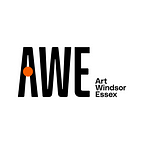Setting and Measuring Key Performance Indicators for Digital Initiatives
In a previous article, we discussed the importance of gathering audience feedback. We examined how working iteratively, through an agile project management approach, can yield the best possible digital product or project. Continuous improvement requires recording — and responding — to different types of user feedback, while also setting — and measuring — key performance indicators (KPIs).
Types of feedback
There are two types of feedback: direct and indirect. Direct feedback is collected by asking the user specific questions through in-person or online surveys, or via feedback submitted through a suggestion box. Indirect feedback comes from observation — noting the ways users interact with a digital project or product. Indirect feedback is often more useful than direct feedback, as it gauges subconscious responses. When people are aware that their responses are being recorded, or that they are submitting self-reported data, they often modify their behaviour so that they will be perceived in a certain way. Some participants also may find it difficult to put their thoughts and feelings into words.
Each museum and gallery will have different definitions of success for programs and projects based on their desired impacts and outcomes. Olivier Maurice, a producer at the Montreal-based digital media creation company Moment Factory, notes a few KPIs that museums and galleries should consider:
· how many people participate in the digital experience
· how many people complete an entire digital experience
· how many people are compelled to visit the museum or gallery (once or multiple times) after completing the experience
Measuring user experiences
If the digital project is accessible through a mobile app, data can be gathered on how long a user engaged with the project, and if they completed the entire experience. The same is possible for a website-based project. To find out how many people the project drew to the museum or gallery itself, staff can ask guests if the digital project prompted their visit upon entry. There is also an opportunity to observe, in person, how people naturally interact with the digital project. Indirect feedback could be gathered through observation, gathering information such as:
· What was the user’s body language while they engaged with the project?
· What were their facial expressions? Did they look happy when engaging with the experience? Did they look confused?
· When the user speaks about the project, what is their tone of voice?
· Is the user sharing the experience with someone else? If so, this provides information about how engaged they are with the project, and how positively they feel about it, as the user seeks to use the experience as a way to bring people together.
Although this information might seem more qualitative, it can be used to improve future product iterations, for example, by underscoring what works (i.e., identifying what is making users happy, and doing more of that) and what might not work (i.e., improving the product interface so it is less confusing and frustrating for the user).
Setting expectations for KPIs
Galleries and museums should set realistic expectations around the use and impact of their digital experiences. Factors to consider when setting KPIs include:
· the population of the city or town in which the museum or gallery is located
· the size of their existing following on social media or in-person attendance
· the contents of their collection and type of project (is it of interest to a broad audience? or a specialized one?)
· the size of the project, and the size of the marketing budget for the project itself
Institutions should conduct research to set reasonable metrics for their projects. Cuseum, a company that offers digital engagement solutions for museums and galleries, states that identifying goals for the institution, and goals for the project itself, should be the first step. Institutions can then “take the next step of developing strategic objectives to meet those goals” in order to determine which KPIs are the right ones.
Both qualitative and quantitative data should be assessed to determine how well a digital project is performing. It is important not to look at every possible metric, but to identify the right — or “key” — metrics for a project’s intended outcomes and an institution’s overall goals. With accurate ways to measure these KPIs, museums and galleries exponentially increase their chances of success.
Written by Micaela Muldoon
